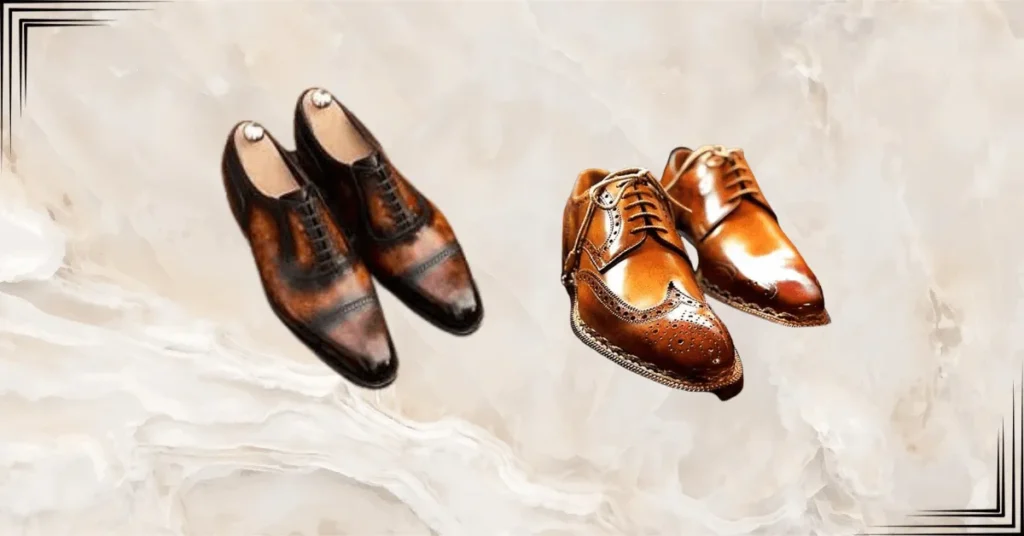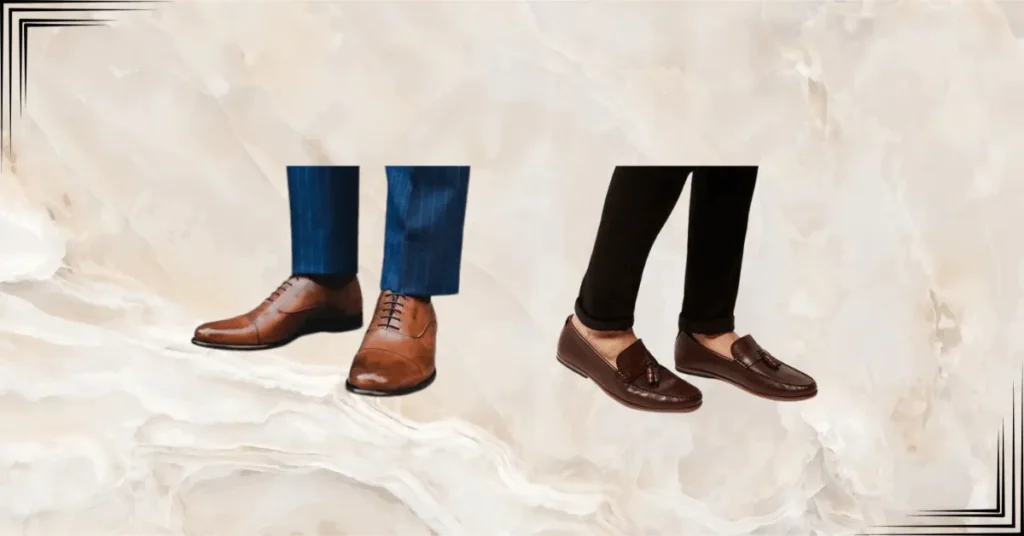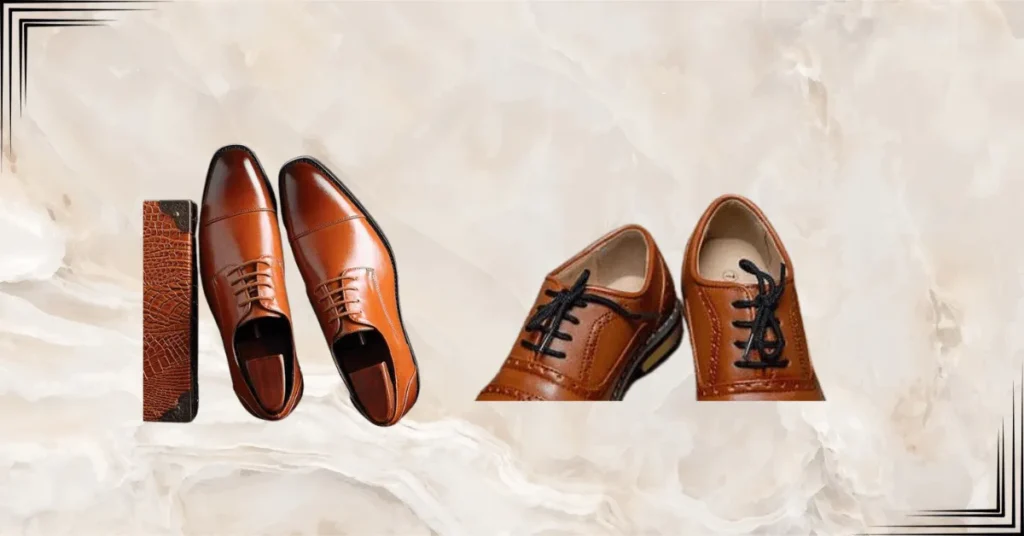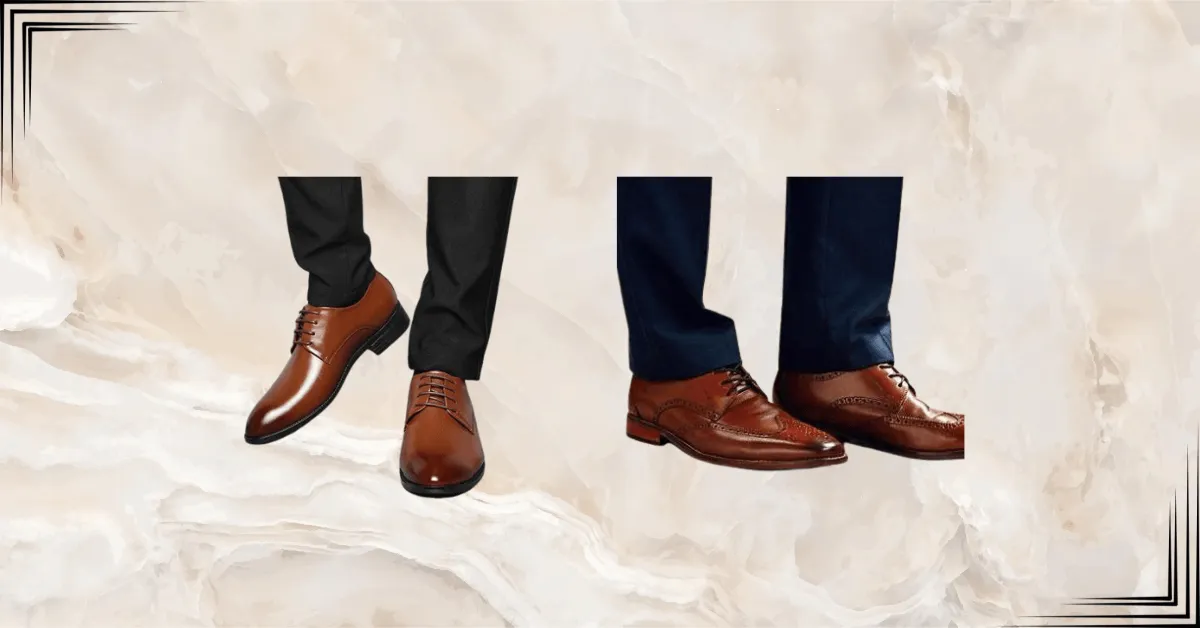Brown Dress Shoes: Perfect for Every Occasion | Timeless Style
Brown dress shoes have become a must-have item in today’s men’s fashion. You can wear these shoes on formal occasions and with everyday outfits. Today’s designers have prominently showcased them in their collections.
Versatility and Popularity:
Their versatility has made them an essential part of every wardrobe. They look especially good with navy, grey, and tan suits and casual outfits like chinos and denim.
Styles and Designs:
In 2025, many new designs will be seen in shoes of this color. Some of these designs have also become very popular, such as Oxfords, Derbies, Loafers, and Monk Straps. These shoes blend traditional craftsmanship with modern designs, making them suitable for every occasion.
Comfort and Functionality:
Nowadays, special attention is also given to comfort in these shoes. The brands that make them have used techniques and materials that do not make you tired even after wearing them all day. You get comfort from these shoes without compromising on style.
Seasonal Adaptability:
You can wear these shoes in every season. Light brown leather shoes are preferred in spring and summer. This quality has made them relevant.
Investment Value:
High-quality brown dress shoes are considered a good investment. If they are properly cared for, they can last a long time.

History
“No brown in town” is an old and informal dress code that was very popular in 19th-century England. The real purpose behind this was that brown shoes should be worn only in the countryside, while in the cities, black shoes were considered more formal. This rule reflected social class and status, where upper-class people showed off their elite position through their footwear along with their clothes.
Beau Brummell, a famous fashion icon of Regency England, redefined men’s fashion with his elegant style. He was the one who made black boots a part of formal wear and brown shoes a part of casual wear. His approach reinforced the “no brown in town” rule. This rule was accepted as an unwritten dress code in British society. People who follow the old money style often like this type of shoes.
Even today, many people follow this rule in London’s financial district, and this trend is slowly changing. In modern fashion, brown shoes are also considered part of the formal dress code.
Benefits of Brown Dress Shoes
Versatility:
These shoes look good with outfits of every color and style. They can easily be paired with red and tan suits, and they also look good when worn with casual outfits.
Variety of Styles:
- In shoes mein kai styles available hain:
- Oxfords: These are for a formal and classic look.
- Darbs: Slightly relaxed and versatile.
- Loafers: Comfortable and easy to wear.
- Monk straps: Unique and stylish.
Every style has its place, and you can choose it per your style.
Patina & Personality:
With the passage of time, these shoes develop a unique patina, which gives them a distinct look. This aging process gives the shoes a personal touch, and thus, each pair tells its own story. Regular polishing and care are required to maintain this patina.

When to Wear
- Business Suits:
Dark brown shoes, like oxblood, are ideal for formal business suits. They look better when worn with a mid-grey suit. But keep one thing in mind: do not wear them with a black suit. This combination can clash.
- Casual Suits:
Shoes like light brown shoes are perfect for casual suits. They look stylish with linen, flannel, or tweed suits. You can choose loafers that provide both comfort and style.
- Odd Combinations:
Pairing these shoes with chinos and denim adds versatility. Dark brown loafers can be worn with navy chinos, giving you a smart and casual look. These shoes will also look good with denim jackets, creating a relaxed appearance.
- For Weddings:
If you want to wear these shoes at the wedding, check the dress code before that. Black shoes are preferable for black tie or formal weddings. But if the wedding dress code is semi-formal, then you can wear cherry loafers.
- Styling Tips:
- Brown shoes should be paired with matching belts and socks.
- Dark brown belts and socks always look best with dark brown shoes.
- Light brown shoes can be paired with beige or light grey accessories.

Pairing It With Different Outfits
- With Business Attire: Pairing these shoes with formal suits like navy or grey creates a sophisticated look. Pairing medium brown shoes with navy suits creates an elegant look. These shoes give a professional tone that is ideal for conservative business environments. Medium brown shoes would look good when paired with light grey suits.
- With Casual Wear: These shoes are also versatile enough for casual outfits. Loafers in tan shades look good with chinos, making your outfit look refined. With sports coats, it is very important to match brogue shoes according to the formality of the suit. For example, brogue shoes will look best if worn with a tweed sports coat.
- Matching Accessories: If you coordinate accessories with these shoes, the beauty of your outfit will be enhanced even more. Belts should always match the color of the shoes. Socks should match the trousers. Bags, such as leather briefcases or messenger bags, should also match the color of the shoes so that your overall style remains balanced.
Common Mistakes to Avoid
- Avoiding Too Light a Shade for Formal Settings: You should avoid wearing very light brown shoes for formal occasions, such as business meetings or weddings. These break the formal tone of your outfit.
- Sporty Styles: Spectator shoes, which come in two contrasting colors, look casual and should not be worn in formal gatherings. Always try to prefer classic styles such as Oxfords and similar styles. These maintain the formality of your outfit.
- Mismatching Colors: Whenever you are pairing these shoes with your suit, do keep their shades in mind. Dark brown shoes should be matched with dark suits only. Whereas light brown shoes should be paired with lighter tones. If the colour of your suit and shoes is the same, it will reflect in your overall look. In real men, according to real style, in real men, according to real style, while pairing brown suits with brown shoes, there should be a visible difference in the shades of both, otherwise the look will appear off.

When Not to Wear
- Formal Events: Regarding formal events, wearing a black tie or brown dress shoes should not be used on morning occasions. Since these events are very formal, selecting footwear is also very important. Black patent leather shoes should be worn to a function with a formal dress code. These shoes are very sleek and polished, enhancing your overall formal look. On such occasions, using brown-colored shoes is not considered as it disturbs visual harmony.
- Dark Business Suits: Black shoes are more suitable for dark business suits, such as black, charcoal, and dark navy suits. This allows you to maintain a formal and conservative look, while brown shoes can clash with these suits.
Conclusion
The popularity of brown dress shoes is increasing daily. These shoes add versatility and character to your wardrobe, so every man should definitely invest in high-quality brown dress shoes.
FAQ’S
On which occasion do we wear brown dress shoes?
These shoes can be worn in both formal and casual settings. From business meetings to casual outings, they can be worn on every occasion.
What color suits to pair brown shoes with?
Brown shoes can be worn with dark grey, navy, and tan suits. You can also try pairing light brown shoes with casual outfits.
What is the difference between light brown and dark brown shoes?
Light brown shoes are an excellent choice for casual and summer wear. Meanwhile, dark brown shoes should be worn in formal and professional settings.







